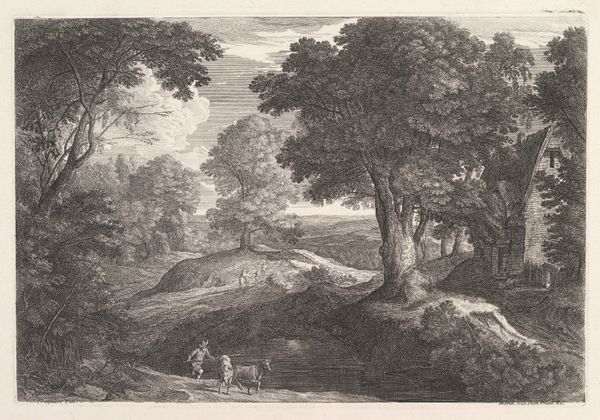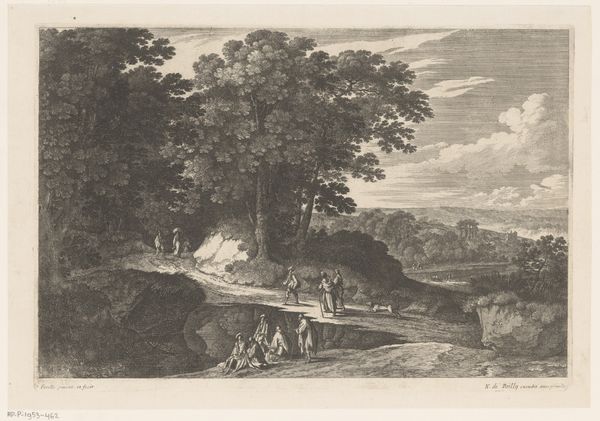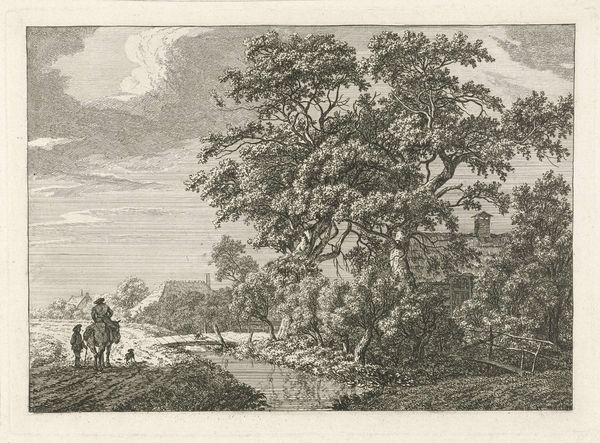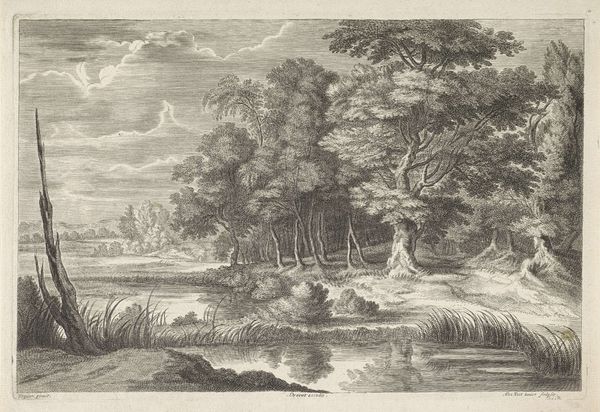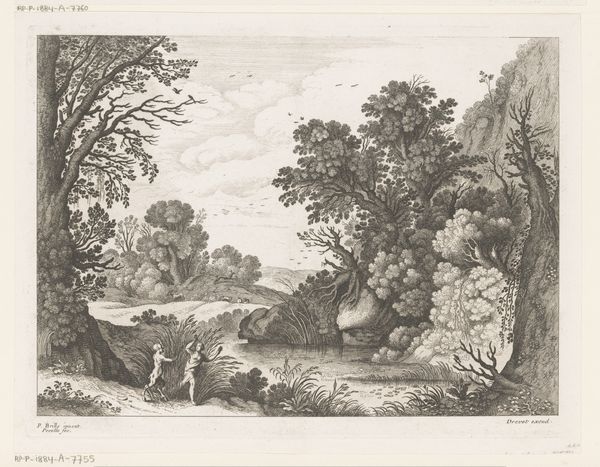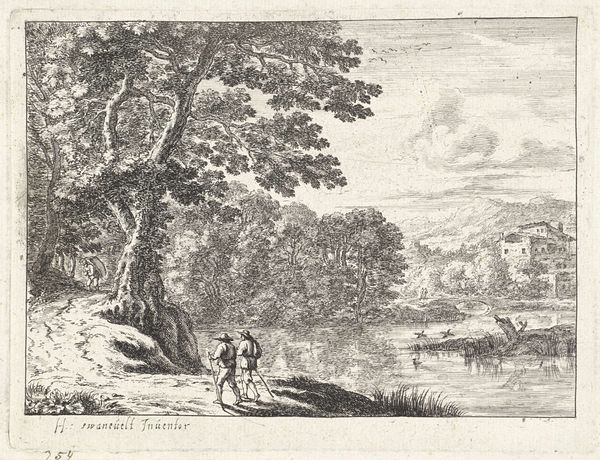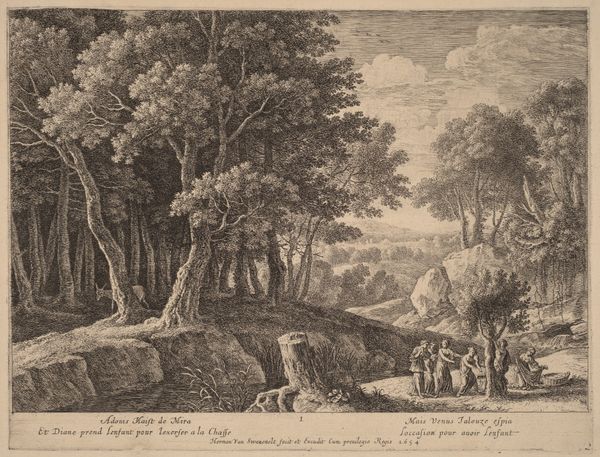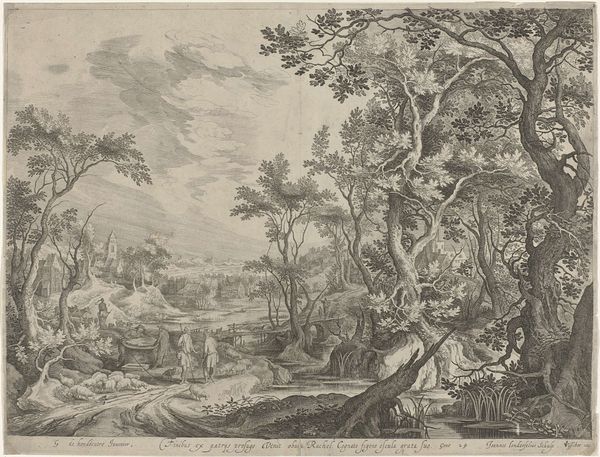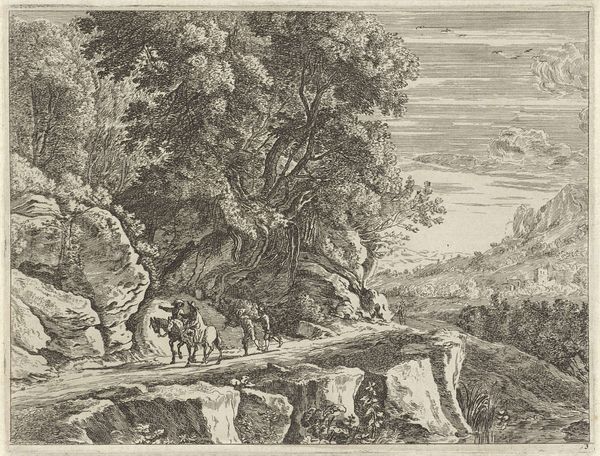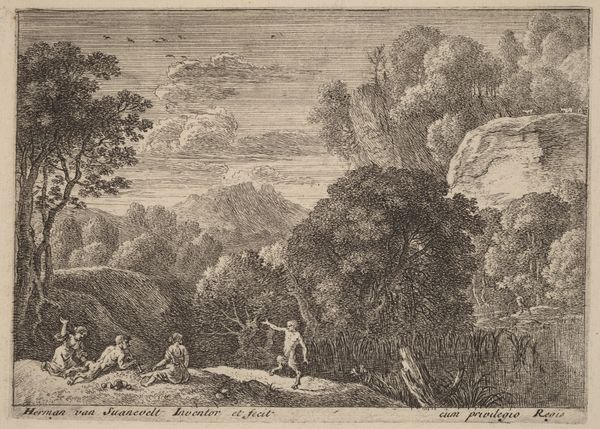
print, etching, engraving
#
narrative-art
#
baroque
# print
#
etching
#
landscape
#
figuration
#
line
#
history-painting
#
engraving
Dimensions: height 295 mm, width 425 mm
Copyright: Rijks Museum: Open Domain
Editor: This is Hendrick Hondius I's "Return of the Prodigal Son" from 1620, a print made with etching and engraving, housed at the Rijksmuseum. The scene feels staged, almost like a theatrical production with figures positioned within the landscape. What’s your take on this work? Curator: Indeed. Consider how prints like these circulated widely in the 17th century, impacting popular understanding of biblical stories. It’s not just the religious aspect; Hondius places the narrative within a Dutch landscape, connecting faith with everyday life. Notice how the printmaker merges foreground drama of the return with pastoral, almost genre-like scenes of rural workers in the background. Editor: I hadn't noticed the background figures. Why that specific setting? Was it a conscious choice, making the religious theme feel relevant? Curator: Absolutely. The deliberate mixing of the biblical and the contemporary. Think about who would have been buying and viewing these prints: emerging merchant class with a strong sense of national and religious identity. Framing the "Prodigal Son" within their landscape affirmed their values, morality and maybe even reminded them to control desires! What statement does it make when the foreground represents emotional turmoil and resolution, set against the backdrop of daily productivity? Editor: It reframes it all. I now see the foreground is not just *the* focus. Curator: It prompts one to ask whether virtue might simply be daily devotion or hard work, something anyone could access versus extraordinary redemption. See how art serves not only spiritual devotion, but constructs social and moral structures of its time! Editor: Thanks. It’s fascinating how looking at the background transforms the artwork's entire meaning and brings the socio-political intent into focus.
Comments
No comments
Be the first to comment and join the conversation on the ultimate creative platform.
